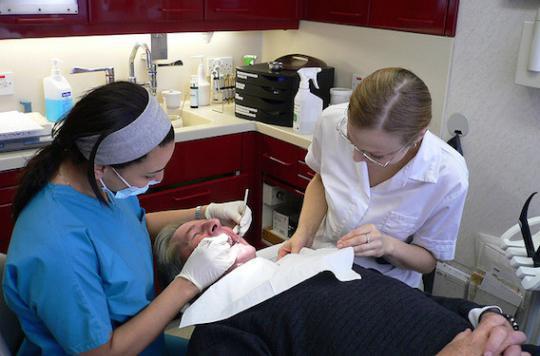Fillings contain mercury. From eight in a patient, the level of this heavy metal in the blood can become dangerous for health.

For 25 years, the World Health Organization has explained that the main source of mercury in the body comes from dental amalgams, and that high levels of this heavy metal could be toxic. According to a recent study from the University of Georgia (USA) published in Ecotoxicology and Environmental Safety, beyond eight mercury fillings, the level found in the blood could prove to be dangerous.
“Mercury exposure from dental fillings is not a new concern, but studies conducted so far had returned conflicting results and limited in magnitude,” said Xiaozhong Yu, research director at the Department of Environmental Toxicology. , and one of the authors of this study which raises some questions among dentists.
11 or more fillings for one in four people
The researchers studied the levels of methyl mercury, the most toxic form of the metal, in the blood of more than 14,000 people between 2003 and 2012. They then noted that for those with eight fillings, this rate was twice and half higher than the average, and represented a limit not to be exceeded to avoid health problems.
However, if an adult has on average three dental amalgams in the United States, they would be a quarter of the population to have treated more than eleven cavities, which presents a risk for their long-term health. Immune system, kidneys, heart, lungs, brain among others: the toxicity of mercury is varied on the body, even at low doses. But these fillings are currently considered by dentists to be the best available on the market, and of exceptional longevity, up to 30 or 40 years. For example, they represent approximately 70% of the French market.

Risky alternatives
At the end of 2014, the National Medicines Safety Agency (ANSM) affirmed its desire to see a significant reduction in the use of mercury-based amalgams in the treatment of dental caries. In particular, it had issued recommendations for dental surgeons in order to limit it to restorations of molars and premolars in the event of a high prevalence of caries and multiple and extensive lesions. She also advised against mercury for the care of patients with kidney failure.
Among the competition, we can find resins. But these are not necessarily less dangerous. They may, for example, contain bisphenol A (BPA). In the same study, the scientists looked for a link between these amalgams and the level of this endocrine disruptor in the body, without succeeding in establishing it formally. On the other hand, the levels of BPA in urine increased considerably between 2003 and 2012, and this additional intake could limit the added value of abandoning mercury fillings.
.

















